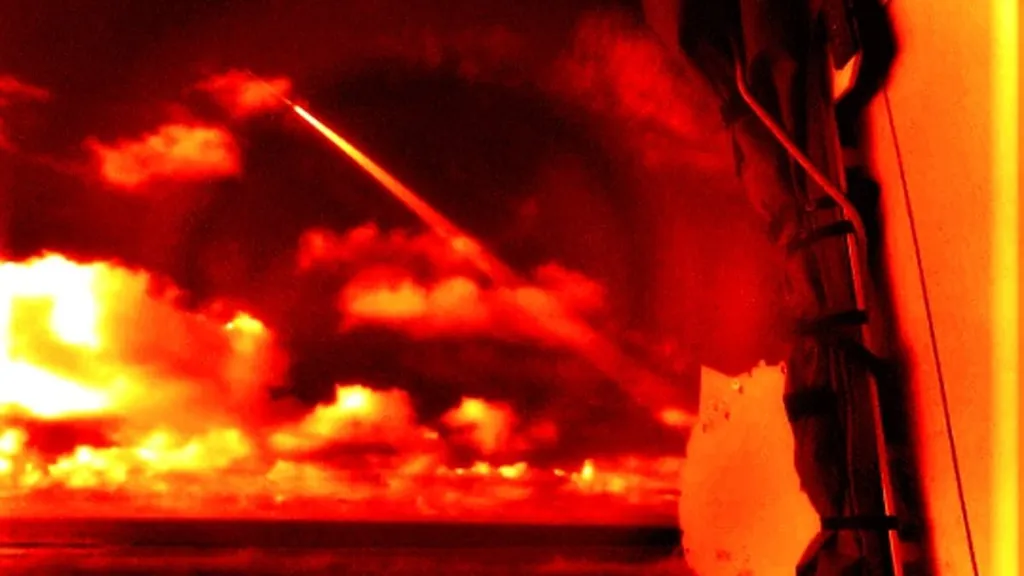A huge ship is due to be blown apart by military forces in an explosive training exercise off the coast of Scotland.
The joint US and UK operation to sink the vessel is due to take place next year as the UK's armed forces test out the effectiveness of their cutting-edge hardware.
Dubbed Atlantic Thunder 26, the training exercise will also see robots despatched 6,000 feet down to the seabed to assess the damage to the sunken ship, which is likely to be a frigate, and determine how well the weapons performed.
Known as a SINKEX exercise, the bombardment of the ship will take place at the Ministry of Defence's Hebrides Range off the northwest coast of Scotland.
In a document outlining its plans and filled with military jargon, the MoD stated the exercise will validate 'kill chains, build resilient kill webs and deliver strategic messaging through kinetic demonstration'.
The military exercise will see the ship bombarded until it sinks, much like this previous operation the US military carried out off the Hawaiian Islands in 2021.
Once the ship has been sunk it will be analysed by unmanned underwater drones. These types of machines are being increasingly tested for the military.
The sinking exercise will take place at the same MoD testing range where it tried out its futuristic DragonFire laser last year.
Tests such as the DragonFire laser exercise are carried out as the military looks to gain an advantage over its rivals.
It also said it hopes the test will demonstrate how artificial intelligence and machine learning can provide an advantage in future missions.
The upcoming exercise builds on a series of successful trials carried out at the Scottish range, including a dramatic demonstration of the MoD's DragonFire laser last year.
The futuristic weapon uses an intense beam of light to cut through targets, leading to structural failure or more significant damage if a missile warhead is targeted.
Following the test of DraonFire, the MoD said the precision required was equivalent to hitting a £1 coin from a kilometre away.
The use of autonomous robots to survey the sunken ship ties in with the US and UK military's efforts in that area of technology.
Although still in the development stages, the machines have developed in recent years to be able to overcome the vast difficulties of operating underwater.
Water pressure can be crushing at great depths, while communication is severely limited, meaning vehicles may be required to navigate on their own without being remotely piloted.
Despite the immense difficulties, the US navy has been testing and fielding several new systems designed to map the ocean floor, seek out mines, search for submarines and even launch attacks.
While the unmanned crafts are now able to stay out for days or weeks, the goal is to create an underwater network of service stations that would allow the vehicles to do their jobs for months - and eventually years.
US military officials have previously said there is a sense of urgency because the undersea domain could one day be as contested as the surface of the sea, the skies - and even space.
While Russia and China are investing in their submarine fleets, the Pentagon has sought to seize an advantage by introducing new technologies especially those where humans team up with highly capable robots and autonomous systems.
